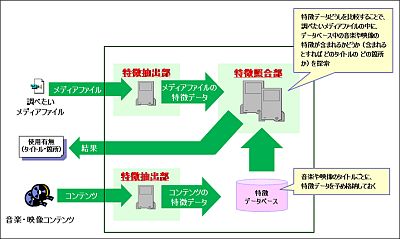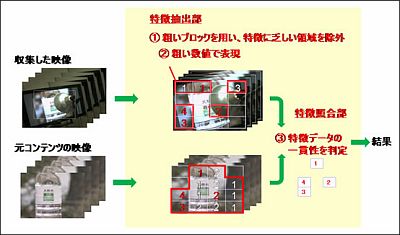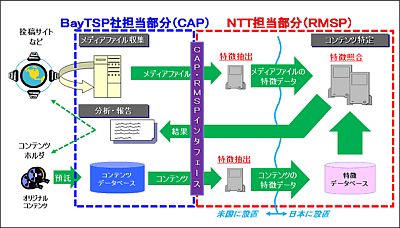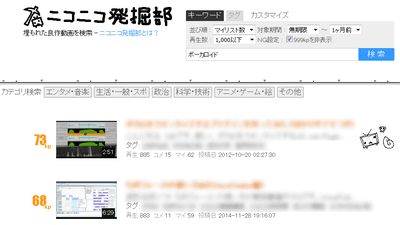"Robust media search technology" which automatically finds illegal music and images on the Internet from several thousand to tens of thousands per day

According to NTT's announcement, by checking the characteristics of sound and video, it is possible to detect at a high speed whether specific music and video registered beforehand are included in sounds and images such as posted contents on the Internet We developed "Robust Media Search (RMS) technology".
We will conduct a demonstration experiment to identify the titles of music and video contents used in online posting sites and blog sites using this technology from April 22, 2008 (US time) to September 30 It is said to start.
Details of what kind of thing is possible with this mechanism are as follows.
Music and video content on the Internet
Begin verification experiment specifying use
~ Developing "Robust media search technology" capable of handling large amount of posted contents ~
This RMS technology is one of the media search technologies, and it features high robustness compared with conventional media search technology. Robustness means that the original content can be specified with high accuracy even if various changes (such as overlap of another sound, overlap of telop etc., deterioration of sound quality and image quality, editing and processing, etc.) are added to a signal of sound or video It is hard to be affected by signal change. The RMS technology is composed of a feature extracting section for extracting a numerical value called feature data based on the waveform value of the sound and the pixel value of the image and a feature collation section for matching the feature data extracted by the feature extracting section at high speed That's right.
As shown in the figure

In the video search by the RMS technique, a feature extraction unit selects only a characteristic portion from the video and digitizes it, and devises to verify while considering the consistency of these numerical values in the feature collation unit With high robustness realized, roughly explained as follows.

In addition, we developed a time-consistency filter technology and succeeded in compressing the feature data size this time. By doing this, it is possible to greatly speed up the processing of the feature matching unit without losing robustness, and it is possible to process a large amount of contribution content. This makes it possible to automate the identification of music and video contents at various sites on the Internet, and it is expected not only to detect and delete illegal contents, but also to be expected to be utilized for new services, etc., as the actual situation of use is grasped is.
For that purpose, it is supposed to carry out a demonstration experiment with BayTSP Corporation, and the process of NTT's research laboratory to convert it to feature data by RMS technology (feature extractor) for the contents of music and video contents deposited by the right holder Perform and store feature data in database. Next, BayTSP gathers some of the media files posted / posted on real posting sites and blog sites. NTT's research laboratory converts it into feature data by the same process as above, searches for feature data accumulated in the database by RMS technology (feature collation unit), and returns the result to BayTSP Inc. When.

In this experiment, it seems that it is planned to collate with databases on files of thousands to tens of thousands of files per day, so perhaps about illegal use such as various video sharing sites on the net Concern may be relaxed to some extent by the power of technology.
Related Posts:
in Note, Posted by darkhorse







